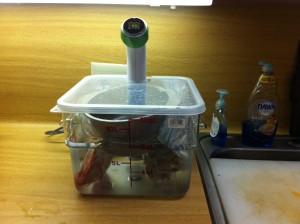My wife and I like to joke that stores do their market research by figuring out what we like a lot and then discontinuing those items. That’s how I feel about Apple’s decision a couple of iOS upgrades ago to decouple Podcasts and iTunes U from Music.
I like to listen to podcasts. I listen to podcasts much more often than I listen to actual music. I often listen to podcasts using my iPhone hooked to the USB connector in my Honda Civic hybrid. Before Apple separated the apps, my phone would play the next podcast when it finished the episode I was listening to. Because I have a very short commute, I usually have a bunch of episodes to catch up on.
After the apps were separated, my phone tended to default to the music app instead of continuing to play podcasts. This was annoying but I tried to avoid the safety hazard of fumbling with my phone while driving (at least until a stoplight). It wasn’t so bad… the song that came up was usually Miles Davis’ All Blues, one of the greatest jazz standards of all time.
But that was before the most recent iOS update, which seemed to have turned on some kind of cloud sync with my iTunes account, even though I had it set to “Sync selected playlists, artists, albums and genres”. A couple of years ago I downloaded the free Apple Christmas music compendium, which included the incredibly insipid and annoying Above the Northern Lights by Mannheim Steamroller… and until just now I couldn’t delete it.
- I deleted it from my laptop and resynced. It was still there
- I swiped left and got the delete button on my phone. I hit delete. It came back
- I tried the above with many different permutations of settings on the phone and the iTunes app on my laptop. It was still there.
Many of these attempts were based on Finally, I found this thread on the Apple forums. The solution involves deleting all of your music and then resyncing with a computer.
- On the phone:
- Settings > Music: make sure Show All Music is Off
- Settings > General > Usage > Music: use the edit button to delete all the data from the music app
- Connect to the computer and resync to copy music from iTunes to the phone
Note that this doesn’t work in the untethered world that Apple aspires to for iOS devices. Also, when I turn Show All Music back on, the damned song comes back. I never subscribed to iTunes match, btw.
As an Apple stockholder, I usually just let my proxy default to the current directors. But I would consider voting for an alternative board whose platform was to fire whoever at Apple is responsible for splitting podcasts out of Music (deleting the annoying song was not a priority for me until the stupid cloud song became the default) and whoever made it so freaking hard to delete songs.
 I have some frozen shrimp from HEB. Thaw these in the Nomiku set to 32F. Tap water started at about 65… dropped to the mid 50s pretty quickly. A problem with irregularly shaped things like shrimp and vegetables has been getting things to stay submerged. Here, I’m using a bowl and the lid of the Cambro box to hold the shrimp under.
I have some frozen shrimp from HEB. Thaw these in the Nomiku set to 32F. Tap water started at about 65… dropped to the mid 50s pretty quickly. A problem with irregularly shaped things like shrimp and vegetables has been getting things to stay submerged. Here, I’m using a bowl and the lid of the Cambro box to hold the shrimp under. ed too.
ed too.
